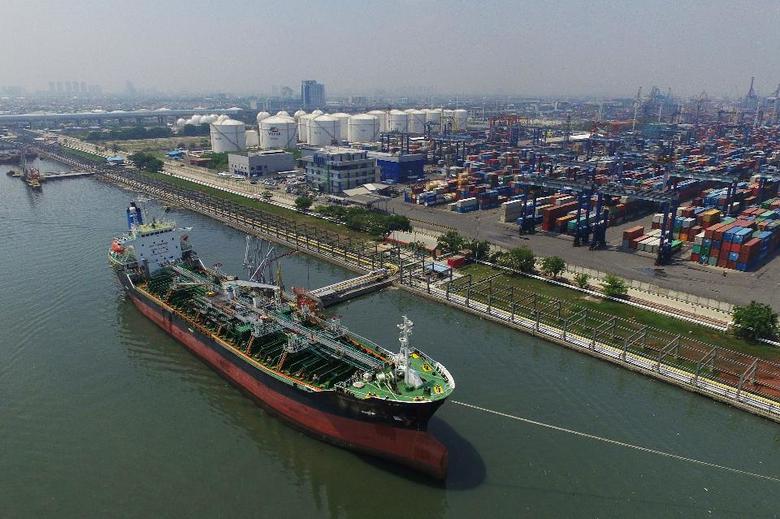
SAUDI'S OIL POLICY

FT - Saudi Arabia will join other Opec oil producers on May 25 to decide whether to maintain production cuts or let them expire. Whatever decision they reach will not be enough, on its own, to rescue the oil price.
The last six months have shown that Saudi Arabia's conventional approach to market management is no longer working: crude has fallen back below $50 a barrel, US shale oil output is again on the rise and Saudi-led Opec, if anything, is worse off than when it agreed the supply deal back in November, having cut volumes for little upside on price.
In the age of shale, if Saudi Arabia wants to restore its role as the price setter, it needs to embrace more radical action.
Like the Federal Reserve in the wake of Lehman Brothers collapse, the time has come for the kingdom — often described as the central bank of oil — to embrace an unconventional response to an unprecedented crisis.
Cutting production can influence the spot market but it can do little to change expectations for how the market will look a few years from now. This is what the kingdom really needs to target given the game-changing nature of the shale revolution.
In the financial crisis, the Federal Reserve quickly moved from simply cutting short-term interest rates to engaging in direct purchases of longer-term securities. The aim, ultimately successful, was to put downward pressure on long-term interest rates, encouraging investors to spend money now to help the economy recover.
Saudi Arabia has the ability to exert a similar influence over oil by hedging its long-term production through the oil derivatives market.
In other words, it should concurrently cut output and sell long-dated oil futures and related contracts. While selling oil contracts to raise the price may seem counterintuitive, by signalling to the market that Saudi Arabia will assume the role of seller of first resort, it would achieve much.
It would swiftly push lower the back end of the oil market forward curve. This would likely restore "backwardation" to the oil term structure by driving long-term future prices below the spot market. Backwardation would in turn make it unprofitable for traders to store oil and speed up the normalisation of inventory levels.
Furthermore, the selling of long-dated contracts by Saudi Arabia would complicate the process of forward hedging for shale producers. That in turn would increase their exposure to conventional supply management tools, amplifying the impact of gains (supply cuts) and pains (oversupply).
Currently, shale producers can lock in higher prices for future production, giving them the confidence to keep drilling even for those who cannot generate cash at existing spot prices.
In the US alone, according to a Wood Mackenzie study, leading independent producers have hedged 27 per cent of their expected 2017 production, 10 percentage points more than this time a year ago.
Second, Opec's cuts reopened the US energy high-yield credit market, effectively allowing shale oil producers to grow production faster than expected. It is no coincidence that horizontal oil rigs in the US have increased by 40 per cent since January.
Hedging would lower Saudi Arabia's borrowing costs as it does for Mexico, which has the world's largest sovereign oil hedging programme, at a time when the kingdom is debuting in dollar-denominated Islamic bonds with plans to raise $10bn-$15bn this year.
Finally, hedging would have bullish ramifications, we think, for the valuation of the state oil company Saudi Aramco as the kingdom would clearly reaffirm its central role in the market.
Saudi Arabia should recognise that — unlike the US — a stable oil market is no longer in its interest. The kingdom has to come to terms with the heritage of former oil minister Ali al-Naimi.
Price stability, which Mr Naimi valued greatly, no longer works in its favour. Volatility does. A stable price environment makes credit for shale oil plays cheaper. Uncertainty makes it more expensive. Uncertainty would also deter "carry traders" from buying discounted forward contracts hoping for prices to roll up the curve.
The kingdom has shied away from getting involved in the back end of the oil forward curve because it would have an overwhelming impact on a relatively illiquid portion of the market. But shale oil changed everything. The Saudis can no longer bring a knife to a gunfight: they have to pursue unconventional policies using unconventional tools.
There are capital risks associated with this strategy (should the long-dated hedges be unwound at a loss) but we believe the rewards would be incommensurate.
In fact, precisely because the impact of such a policy may be potentially overwhelming, a show of intent by the kingdom rather than volume may suffice to reshape the oil market.
For Saudi Arabia, the time has come for bold, unconventional measures. The alternative is no longer working.
-----
Earlier:
OPEC OIL PRODUCTION: 31.85 MBD
SAUDI INVESTMENT DIVERCIFICATION




